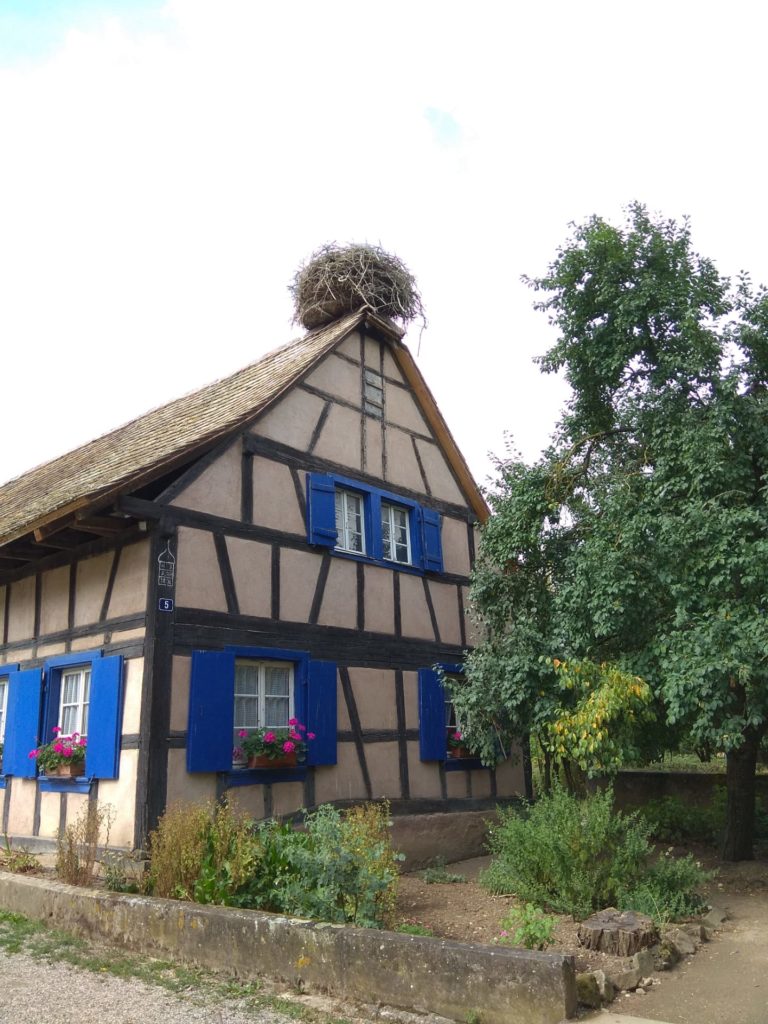Alsace, a region located on the eastern border of France close to Germany and Switzerland, is a magical place full of surprises. In this new series, we will take you to this very special place and give you a taste of the many wonders it has to offer.
By Alessandra Ivaldi / 12.05.2020
Time travel is a unique experience… and we are not talking about something from a science fiction novel, but rather a very special place not far from Mulhouse and Colmar, the two cities described in the previous articles of this series. The place we are talking about exists halfway between the early 20th century and our future: it is known as the “Ecomusée d’Alsace” and is the largest ecomuseum in France, as well as one of the most important in Europe.

To start with, what is an “ecomuseum”? An ecomuseum is an institution intended to protect and enhance territories with a significant cultural and natural heritage. Such a museum is neither bound by walls, nor “confined” in a building: its territory and the indwelling community that keeps its traditions alive, are the ecomuseum itself. The visitor has the opportunity to experience life within the community and the local cultural heritage first hand.
Now let me be clear… Let’s take the Ecomusée d’Alsace as an example. In the 1970s Alsace witnessed a peculiar building phenomenon: the beautiful and traditional Alsatian houses, built using ancient techniques, which had characterised the local landscape from time immemorial, were rapidly being destroyed to make way for more anonymous and less suggestive modern buildings. Among the causes of these demolitions there were physical reasons (like the exodus from the countryside to the big cities) but also reasons of status (to keep up with the times, erasing the region’s rural past).
Fortunately, a group of resourceful students and volunteers decided to commit themselves to the preservation of these dwellings. The original idea, that allowed them to achieve this ambitious goal, was to dismantle the original houses in question and rebuild them in another place: something like a “shelter” for the Alsatian tradition.

This shelter was located in a vast area of land once occupied by a closed industrial plant, made available by the Municipality of Ungersheim. The dwellings were reassembled here in such a way as to appear exactly as they were originally built. This is how the village that we now call Ecomusée d’Alsace was born.
Over the years, the interior of the houses have been filled with objects of Alsatian tradition, as well as photographs and documents donated by families from every corner of the region. Today visitors can enter the village, look around the buildings and see how the residents’ lives unfold.
The village is brought to life by a group of guides/entertainers that live according to the rhythms of the past, impersonating different professional profiles: the barber/dentist, the smith, the peasants and the shepherds, the teacher with her small school, the violin manufacturer…
Several women, dressed in charming and traditional Alsatian costumes, cook delicious meals staying true to the local tradition, sometimes disclosing the secrets of a few recipes to the most curious visitors.
Along with the food, there are a thousand other ways to spend your time inside the Ecomusée. For instance, you can play the games with which the children and adults used to enjoy, or you can explore the vast territory of the ecomuseum aboard a horse-drawn cart. Furthermore, you can hear the villagers’ stories and explanations about the ancient working techniques as well as get to know in detail the peculiar history of the region and its different dialects: halfway between French and German. The reason behind this is that Alsace is a very peculiar region whose culture has been heavily influenced by its troubled history, having always been the subject of contention between France and Germany.

In addition to the historical and cultural aspects, the ecomuseum also aims to preserve the natural heritage of the place. In fact, many animal and plant species are protected and cared for in its interior. The most obvious example is the numerous storks that nest on the roofs of the village houses. If you have the chance to visit the museum at specific times of the year you can see many specimens of this elegant bird up close.
Another peculiarity of the ecomuseum: even if you visit several times during the same year, you will always be faced with something new, because the life inside the museum has to keep up with changes imposed by climate change, exactly as it used to do. The inhabitants of the village follow the passing of the seasons through the celebration of festivities and events that were typical of the Alsatian past and that were connected to folk beliefs and religion.

However, an ecomuseum should not only be connected to the past. In order to be preserved, traditions need to be lived, not simply just remembered. This is what the inhabitants of the village continue to do today, while also keeping an eye on the future.
How? While exploring the Ecomusée you will find an area characterised by the presence of rather bizarre buildings. At first glance you might think that they were built using the traditional techniques, but the amenities within them belong to the modern world, or rather to the society of the future. These buildings are part of the project “Living the 21st century in Alsace” and they serve as an experiment to prove how future generations could benefit from the techniques and knowledge of our past to build a more environmentally friendly society.
This everlasting dialogue between past, present and future and the ability to continually evolve without ever losing sight of the original goal represents the true meaning of the Ecomusée.




Recent Comments